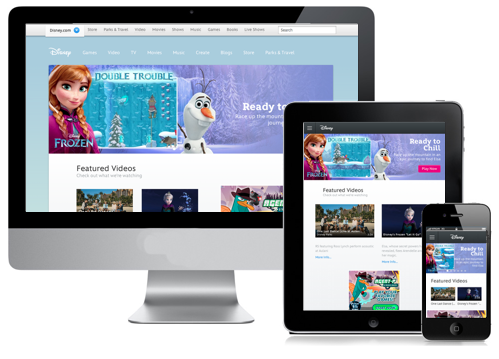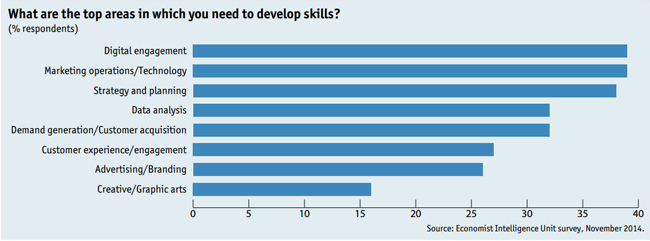
By Lisa Israelovitch
Marketing, as we know it, has been rapidly evolving over the past number of years, and 2015 has been a year of significant change. The role of marketing has transitioned from an expense to an accountable revenue driver that is no longer just a data point on a report or a vehicle to fill the sales pipeline. What has been the catalyst for this change? The dramatic growth of engagement marketing, which has become an expected norm from both the consumer and brand perspective. The message of engaging customers on the right channels has been emphasized over the past year as a foundation for generating incremental revenue. However, engagement marketing is now recognized as a primary driver of a company’s forecasted revenues.
A recent report by The Economist Intelligence Unit, sponsored by Marketo, “The Rise of the Marketer Driving Engagement, Experience and Revenue” examines three trends identified as important and will help a company not leave money on the table.
- A broader view of customer experience, which is increasingly seen as a key to competitive advantage in every industry.
- Digital and data dominate investment. Technology investment illustrates both the dominance and fragmentation of digital channels.
- Marketing will increasingly be seen less as a cost and more as a source of revenue- requiring the next generation of marketers to aggressively seeking new skills
As we examine these trends and what they mean to travel companies, the impact of this change can best be stated by Raja Rajamannar, CMO of MasterCard. “Marketing has become a significant item on the P&L, so it is being challenged like never before.” Travel brands are poised to take advantage of this shift by embracing the fact that 81% of marketers (The Economist) agree: “We need to change the structure and design of our marketing organization to meet the needs of our business over the next three to five years.”
A Broader View of Customer Experience
“A positive customer experience across all touchpoints is increasingly seen as a company’s most valuable asset.” This statement referenced in the survey is spot on for the current direction of the travel and hospitality industry. Travelers today expect an exceptional brand experience at each stage of their trip from the moment they begin dreaming, during the experience and sharing after the fact.
Traditionally a traveler’s experience has been fragmented by numerous communications generated by different brands and multiple departments within each company. An individual can receive dozens of offers, confirmations, and recommendations from various sources. The delivery of these messages comes in different formats; email, websites, PDF’s and social media – often lacking any emotional connection to the traveler. With the responsibility of customer engagement being shared by multiple sources, there is no one entity taking responsibility for the entire experience during the lifecycle of consumer touchpoints. As Jamie Moldafsky, CMO, Wells Fargo states, “There is more of a need for the articulation of an integrated, holistic approach than before because there are myriad channels and contact points.”
The on-demand economy has created a traveling society that wants to be understood, wants offers and deals to be tailored, and do not want to be annoyed with irrelevant offerings and excessive, irritating, communication. This defines engagement marketing in its purest form and is best reflected in customer buying behavior, repeat purchases and virally sharing their experiences on social networks.
Travel brands are challenged to turn multiple offerings into an easy to understand engagement model. Business strategies need to incorporate cross-channel, cross-product, and cross-business integration while keeping a guest first attitude. It is crucial to know the channels preferred by the traveler and craft the appropriate communication based on the channel and the offering. An email campaign containing a coupon for a restaurant discount for an upcoming trip is not as useful or practical as a text message received at your location offering a special dining deal to you at your destination. With guests connected 24/7 and mobile becoming an important tool to enhance a traveler's experience, it's imperative that brands using these channels drive actionable results. So what is the best way to incorporate the best customer experience using the latest technology?
Digital and Data Dominate Investment
According to The Economist Survey, three of the four most widely cited investments are aimed at reaching customers through different channels: via social networks, on mobile devices and the old standby of e-mail. The fourth, analytics, is needed to knit together data from multiple channels into a coherent and actionable portrait of the consumer.
Most businesses, including the travel sector, invest in a multi-channel approach. The use of various platforms such as social media, websites, digital advertising and content marketing still lacks a cohesive experience for the consumer. To deliver an integrated experience, organizations are rapidly adopting an omnichannel approach that accounts for each platform and device, a customer will use to interact with the enterprise. That knowledge is then used to deliver an integrated experience.
Leading travel brands like Disney and Virgin Atlantic have adopted omnichannel strategies that have proven to increase top line revenues. The "My Disney Experience" tool allows you to plan your trip including dining options and securing a fast pass, as well as informing the traveler of wait times, and the same app is used to open your hotel door and store pictures taken in the park.
The opportunity cost of not being omnichannel today is 10% in lost revenue, according to a Customer Engagement Tech Trends Study. With customer engagement a priority for 2016, an omnichannel approach needs to be incorporated into the marketing strategy, and this is where having accurate data is the key.
Before you can sell to your customer, you need to understand your customer. Big data is key to unlocking these insights and can no longer be viewed as just identifying behaviors, but the driver to creating a cohesive direction in elevating the traveler experience while improving revenues. Is marketing responsible for all of this?
Marketing as a Revenue Department
The shift in marketing moving from a cost center to a becoming a revenue generator is changing the role and skills necessary for the daily job function of a marketer. The traditional sales funnel has ceased to exist, with consumer purchasing occurring through the traveler journey. Sales and revenue management still play a significant role. However, revenue is no longer isolated to a single purchase. Marketing has traditionally been responsible for building brand awareness and identity while generating leads. Marketing touchpoints have now become a consumer point of sale. Marketers today need to be technically enabled and understand the integration of using mobile, social networks and analytics to drive revenue.
According to The Economist survey, the top three skills marketers say they need to develop their skills in is digital, technology and strategy. What marketers need is the ability to combine the technical orientation of a project manager and data scientist with the big-picture view of a business strategist.
Travel brands do not want to leave money on the table, and the recognition of marketing as a revenue source is changing that. Digital has enabled companies to connect with a consumer throughout the lifecycle of a trip expanding the customer experience and brand engagement. Knowing your customer and providing offers tailored to the individuals needs not only improves transactions but promotes loyalty through a real time relationship.
To increase sales in 2016, a strategy needs to focus not only on the customer experience, but also an investment in technology, data analysis and enhanced training for marketing. Combine this with an omnichannel approach and you will never miss a revenue opportunity.




